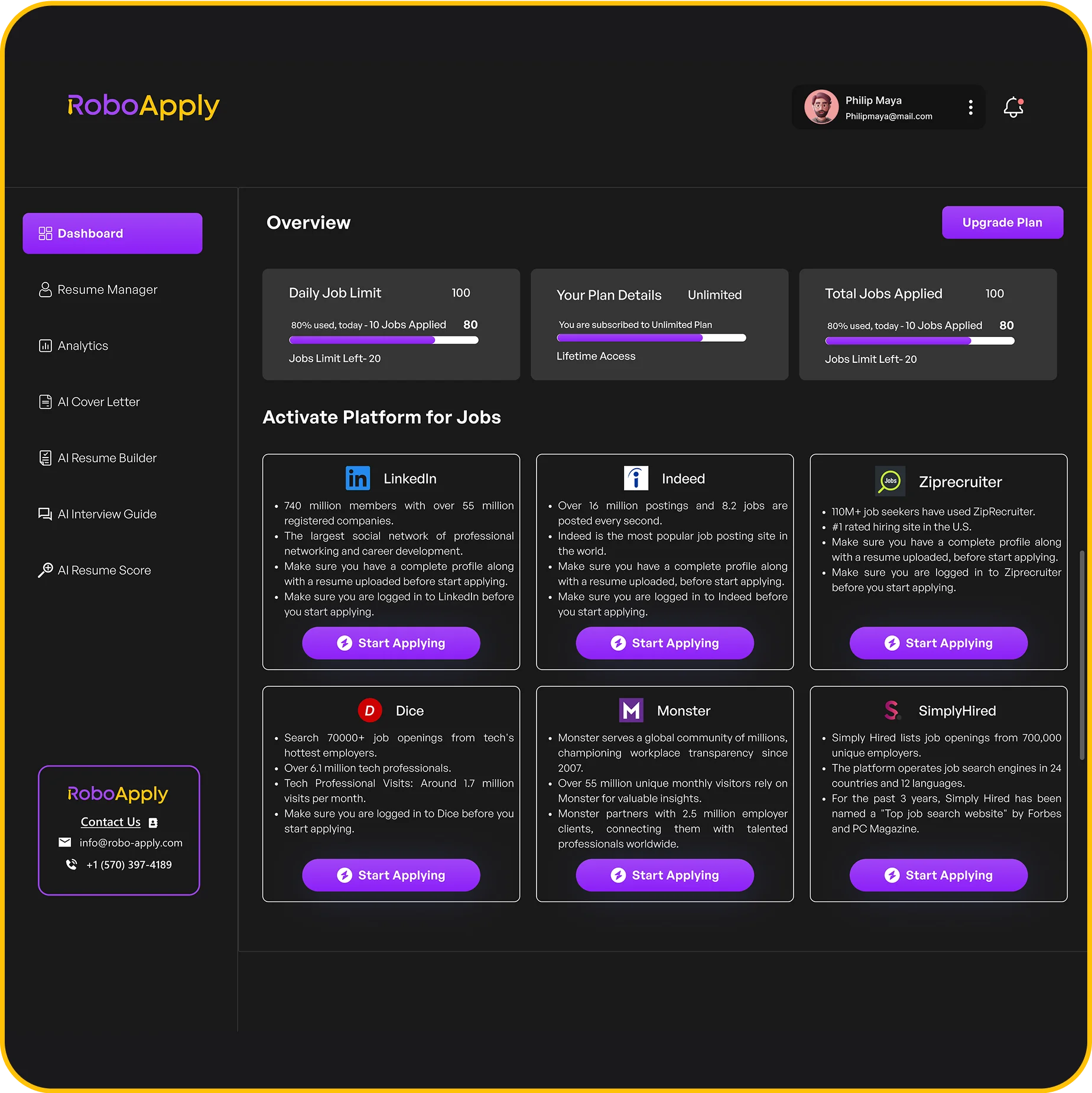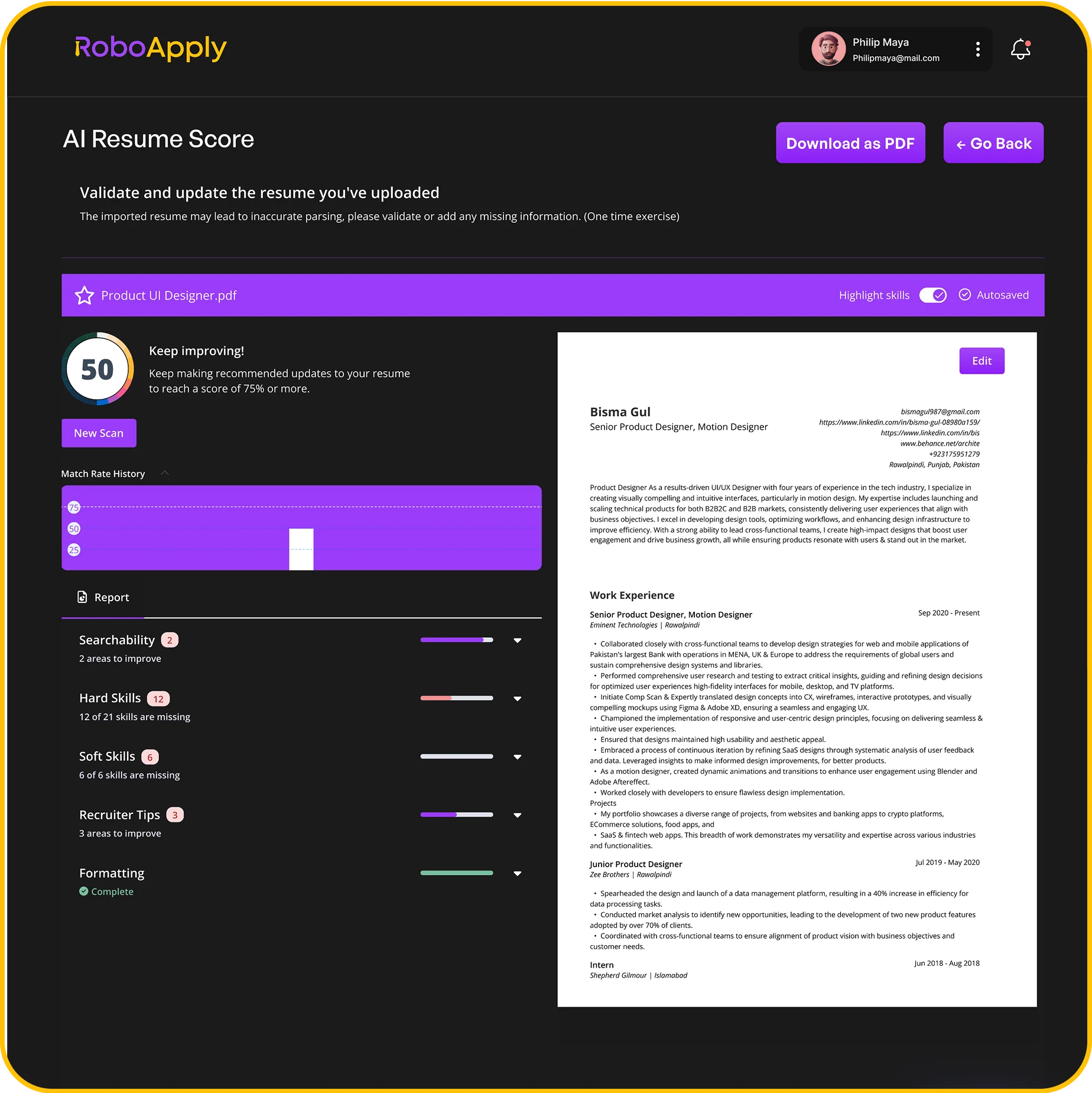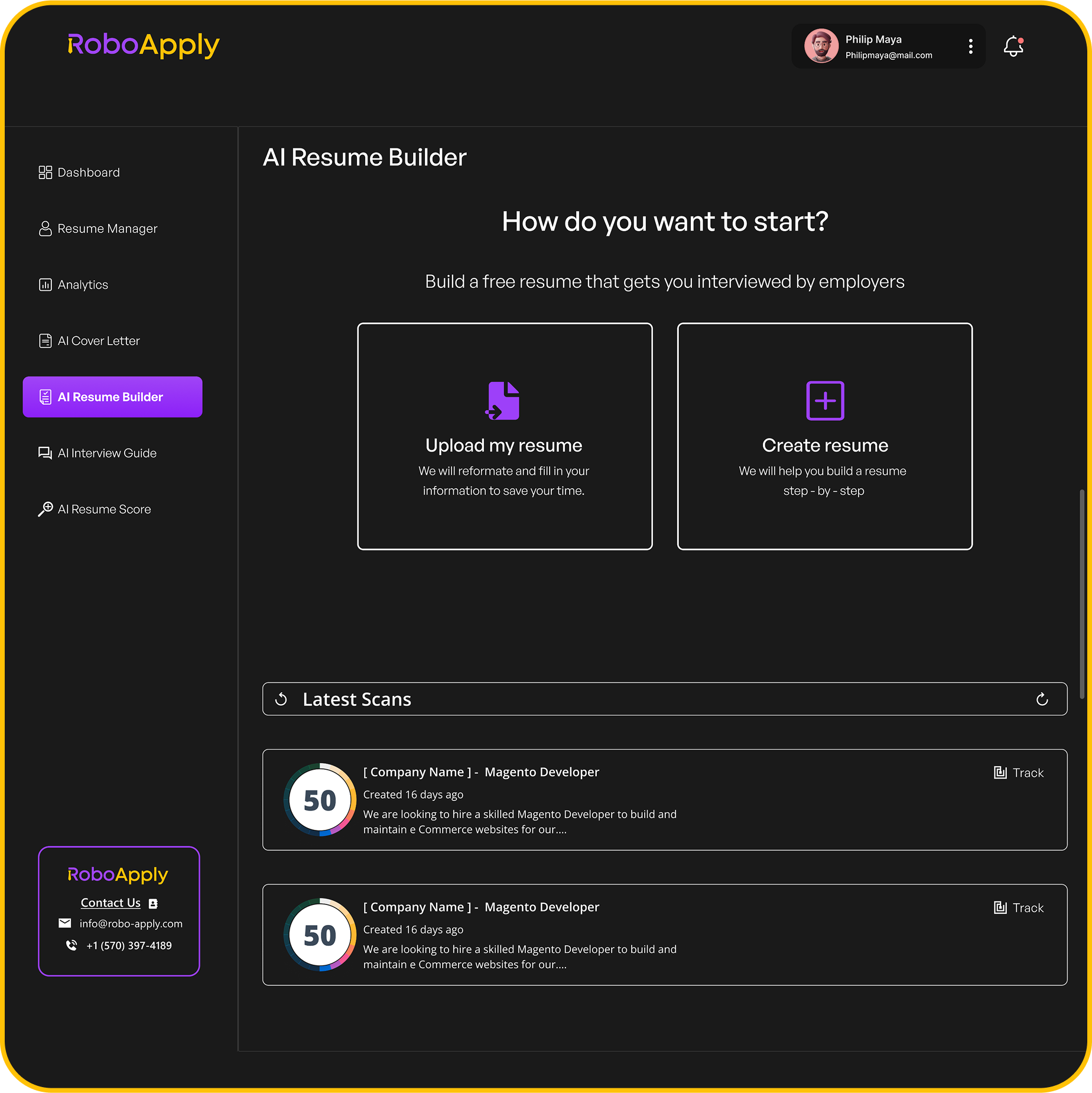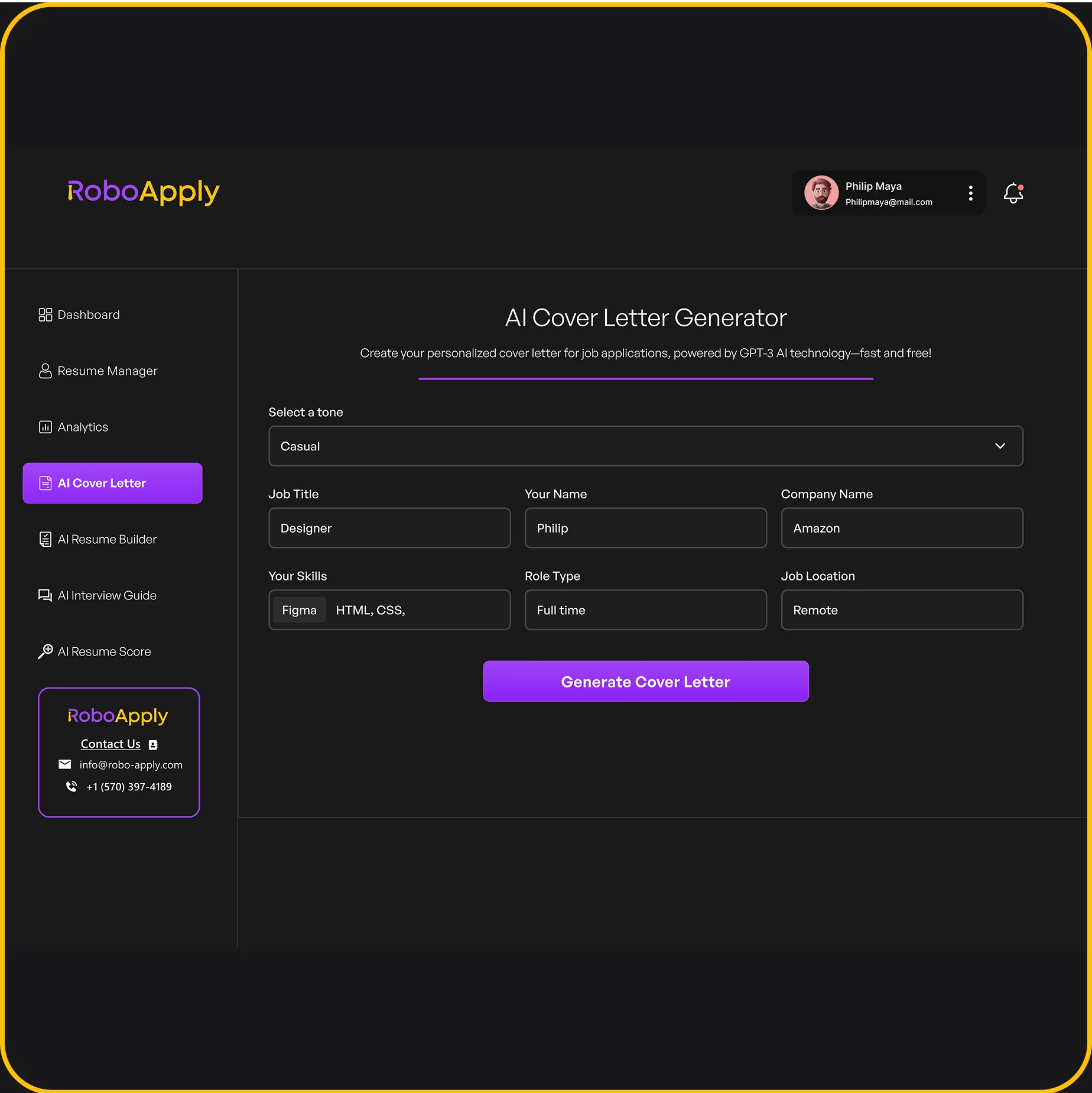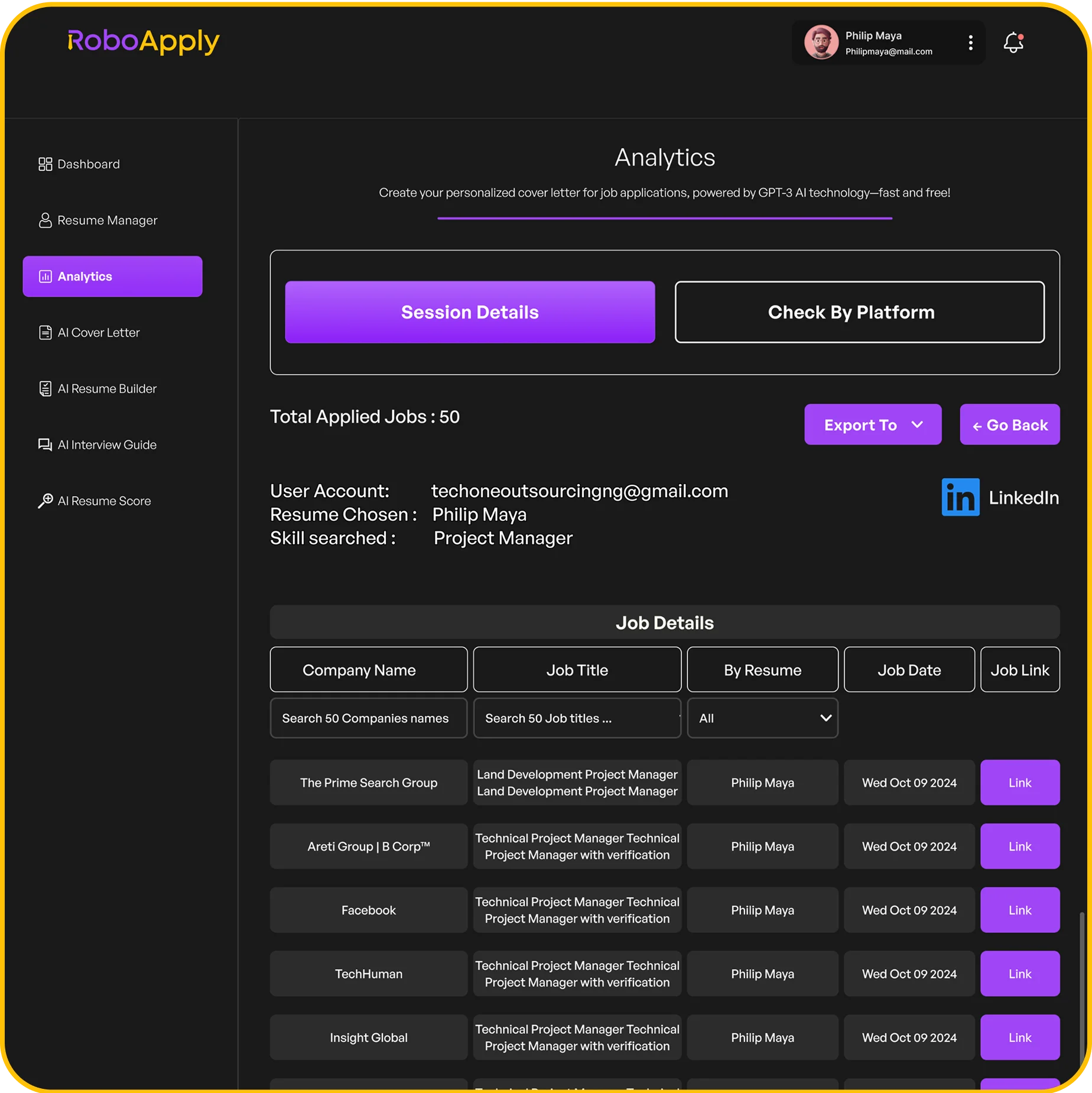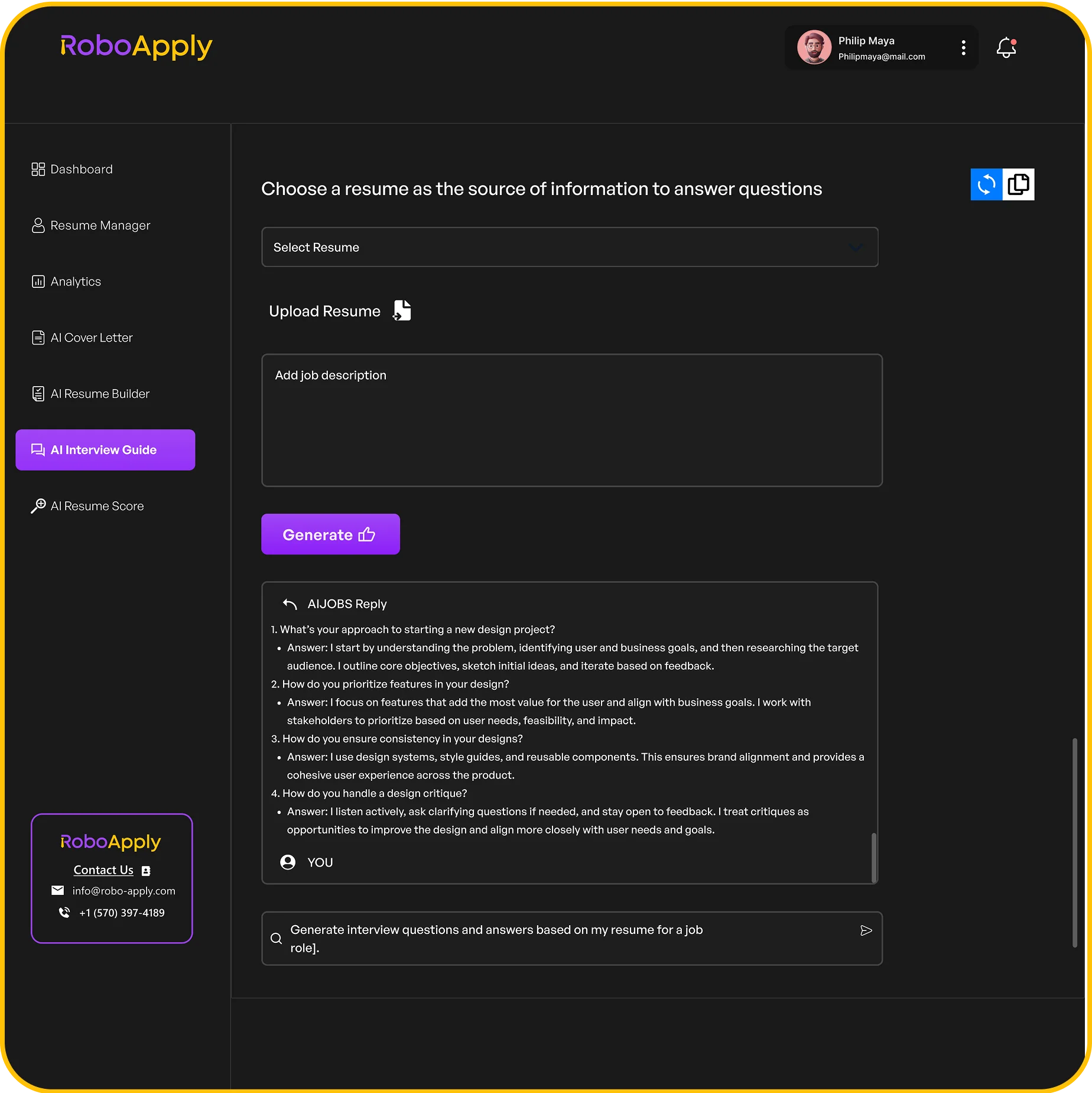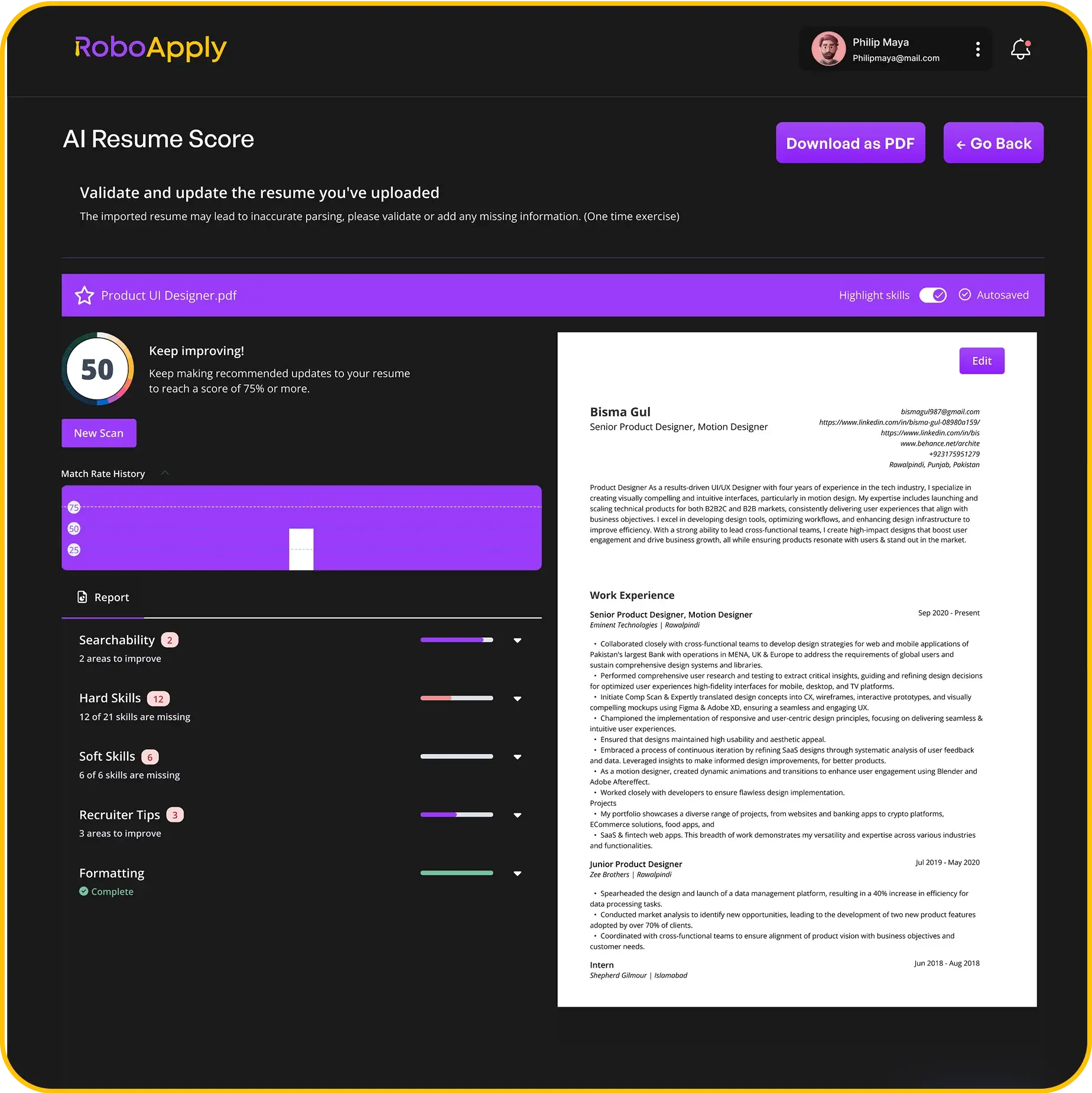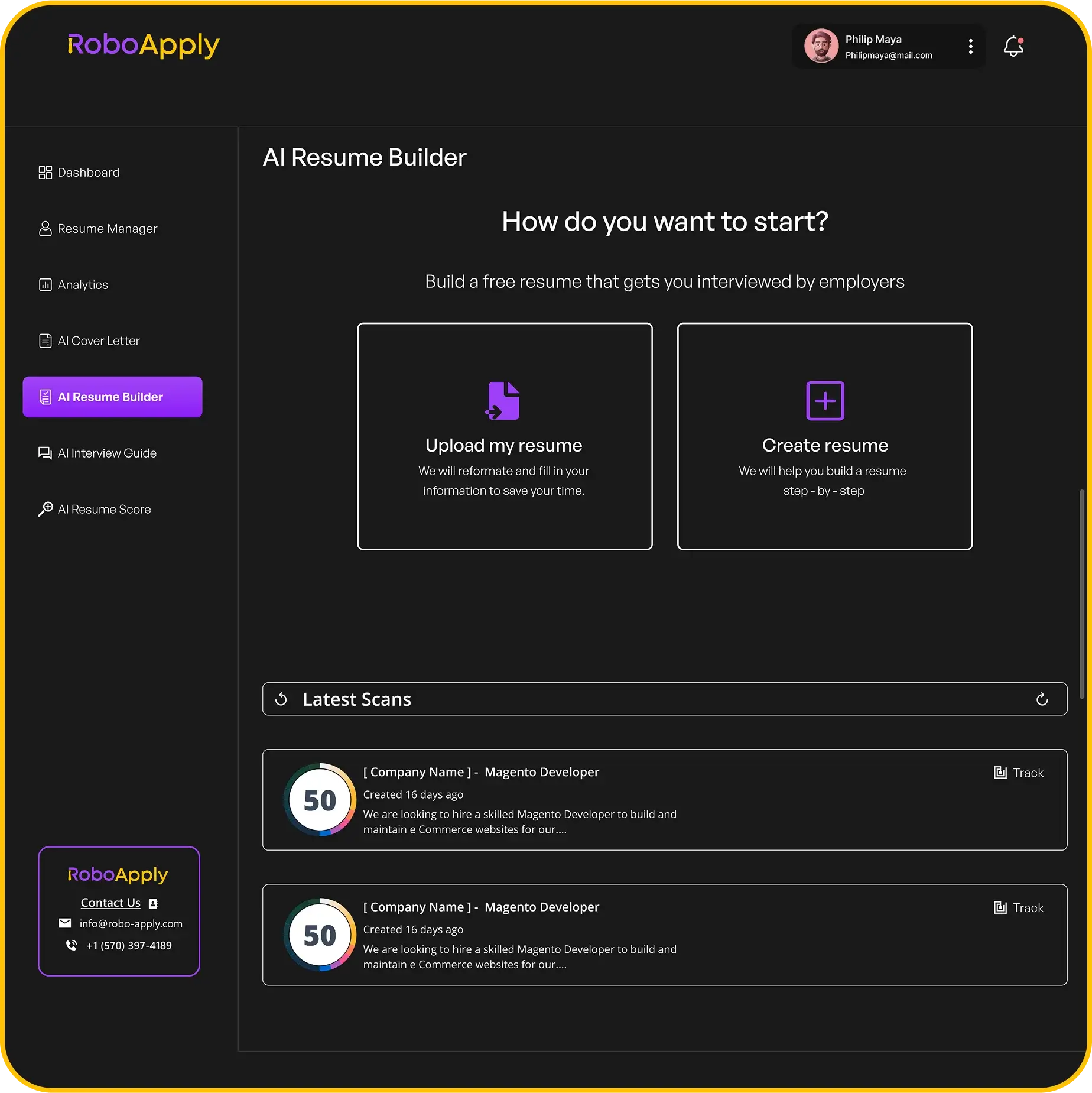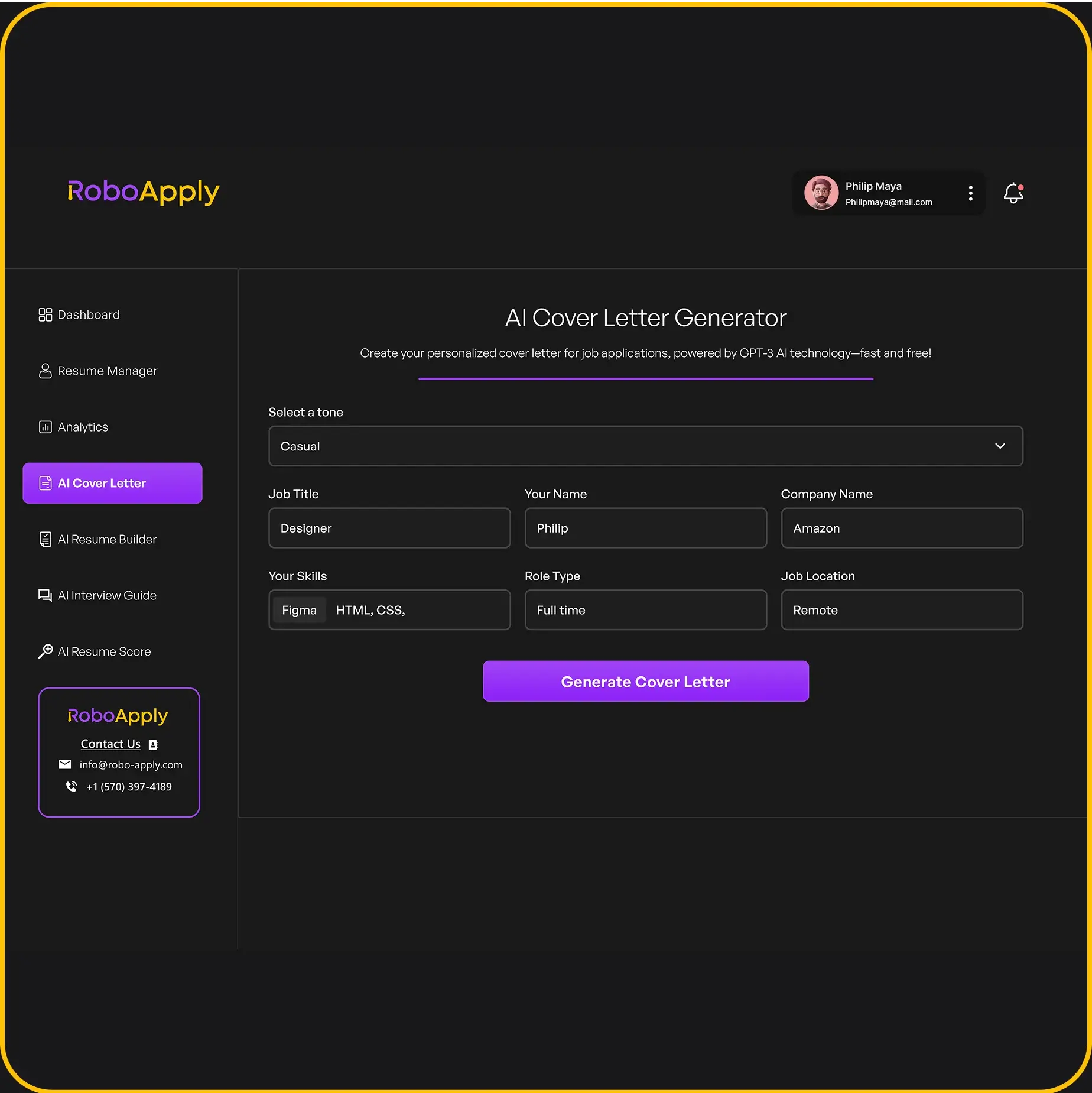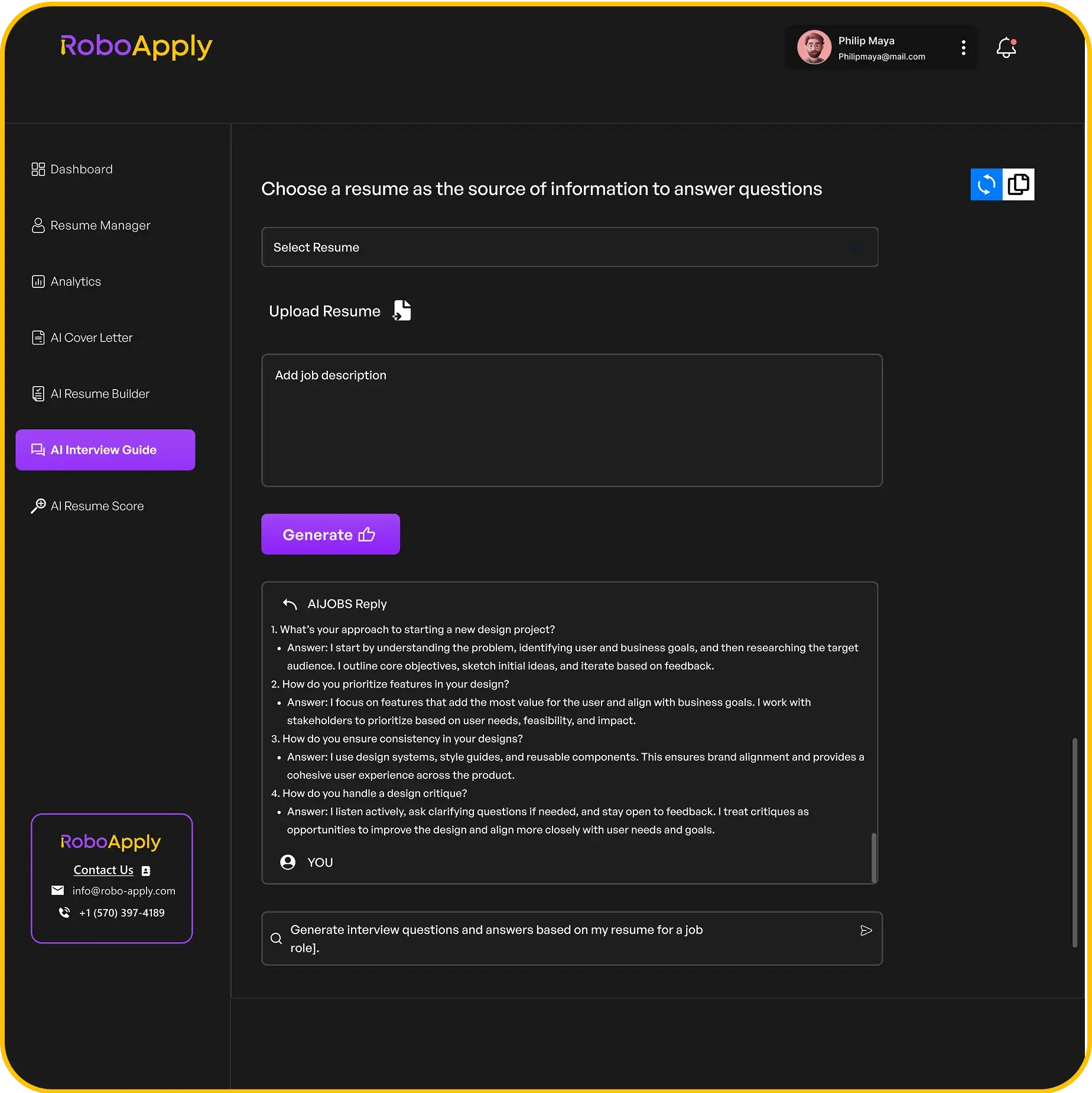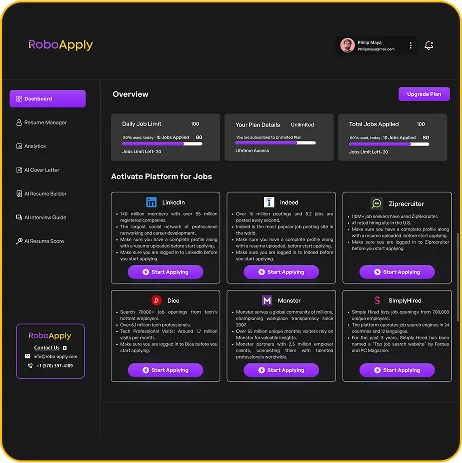So, you’re a Nurse Practitioner, huh? That’s awesome! You’re basically a healthcare superhero, and your resume needs to show that. Getting your resume just right can feel like a big task, but don’t worry. We’re here to help you make it shine. This guide will walk you through everything you need to know to build a Nurse Practitioner Resume | Powered by RoboApply that gets noticed in 2025.
Key Takeaways
- Always use a clear, easy-to-read format for your resume. It helps recruiters find information fast.
- When writing about your work, focus on what you achieved, not just what you did. Use numbers if you can!
- A short summary at the top can quickly tell employers why you’re a great fit for the job.
- Make sure your skills section is packed with both your medical abilities and your people skills.
- Double-check everything! A small mistake can make a bad impression.
1. Resume Format
Choosing the right resume format is the first step in presenting yourself as a qualified Nurse Practitioner. It’s like picking the perfect frame for a picture – it highlights your best features. The format you select influences how recruiters perceive your experience and skills.
There are generally three types of resume formats:
- Reverse-Chronological: This is the most common format, listing your work experience in reverse chronological order, starting with your most recent job. It’s great for showing a steady career progression and is often preferred by recruiters and applicant tracking systems (ATS). For nursing roles, a reverse-chronological format is often best.
- Functional: This format focuses on your skills and abilities rather than your work history. It can be useful if you have gaps in your employment history or are changing careers. However, it’s not always favored by recruiters as it can hide a lack of experience.
- Combination (Hybrid): This format combines elements of both the reverse-chronological and functional formats. It allows you to highlight your skills while still providing a clear timeline of your work experience.
Selecting the right format depends on your individual circumstances. If you have a consistent work history, reverse-chronological is usually the best bet. If you’re changing careers or have employment gaps, a functional or combination format might be more suitable. RoboApply can help you tailor your resume to fit the job description, no matter the format you choose.
Consider these points when selecting your format:
- Read the job description carefully. Some employers may specify a preferred resume format.
- Assess your work history. Do you have a consistent career progression, or are there gaps in your employment?
- Highlight your strengths. Choose a format that allows you to showcase your most relevant skills and experience. You can also review resume examples for inspiration.
2. Work Experience

Your work experience section is the heart of your nurse practitioner resume. It’s where you show, not just tell, what you’ve accomplished. Think of it as your chance to prove you’re not just qualified, but exceptional.
To make this section shine, focus on aligning your experience with the job requirements. Use keywords from the job description to get past those initial screenings. Quantify your achievements whenever possible – numbers speak louder than words. And don’t forget to highlight both your technical skills and your soft skills.
RoboApply can help you tailor this section to each specific job, ensuring your resume always hits the mark.
Here’s how to make your experience section stand out:
- Use Action Verbs: Start each bullet point with a strong action verb to describe what you did. Instead of "Responsible for patient care," try "Managed patient care for 30+ patients daily."
- Quantify Your Achievements: Numbers are your friend. "Reduced patient wait times by 15%" is much more impactful than "Improved patient wait times."
- Tailor to the Job: Read the job description carefully and highlight the experiences and skills that are most relevant. Don’t just list everything you’ve ever done; focus on what the employer is looking for.
The work experience section is often the most detailed part of your resume. It’s where you discuss your past roles and achievements. To effectively list your experience, consider these key tips: Align your expertise with the job requirements, quantify your responsibilities by stating your actual achievements in previous roles, include measurable metrics, and highlight crucial industry skills.
Here’s an example of a strong work experience entry:
Surgical Nurse Practitioner
Kaiser Permanente
08/2015-12/2019
- Managed pre- and post-operative care for an average of 25 surgical patients per day, ensuring optimal patient outcomes and satisfaction.
- Collaborated with surgeons and other healthcare professionals to develop and implement individualized patient care plans.
- Reduced post-operative infection rates by 10% through the implementation of a new infection control protocol.
- Mentored and trained four nurse practitioner students, fostering a learning environment and enhancing the skill set of upcoming practitioners.
- Authored and published three articles in peer-reviewed journals on topics related to elderly care and nurse practitioner roles in geriatric medicine.
- Implemented a falls prevention program that resulted in a 30% reduction in patient falls within the facility over a 2-year span.
This example shows how to use action verbs, quantify achievements, and tailor your experience to the job. It also highlights both technical and soft skills, making it a strong and effective work experience entry. Remember to use free examples and templates to help you get started.
3. Resume Summary

The resume summary is your chance to make a strong first impression. It’s a brief overview of your skills and experience, highlighting why you’re the perfect fit for the job. Think of it as your elevator pitch – a concise and compelling statement that grabs the reader’s attention. A well-crafted summary can significantly increase your chances of landing an interview. It’s especially useful if you have considerable experience as a nurse practitioner.
A resume summary should be tailored to each specific job you’re applying for. Don’t just use a generic statement; instead, focus on the skills and experiences that are most relevant to the position.
Here’s what to keep in mind when writing your resume summary:
- Keep it short and sweet: Aim for 3-5 sentences.
- Focus on your most relevant skills and experience.
- Quantify your accomplishments whenever possible. For example, "Improved patient satisfaction scores by 15%."
- Tailor it to the specific job description.
- Use strong action verbs.
RoboApply can help you craft a compelling summary by analyzing job descriptions and suggesting relevant keywords and phrases. It’s like having a personal resume assistant!
4. Skills
Your skills section is where you showcase what you’re good at. It’s not just about listing things; it’s about showing you have the right mix of abilities to excel as a Nurse Practitioner. Think of it as your chance to highlight both your technical expertise and your interpersonal strengths. RoboApply can help you tailor this section to match specific job requirements, making sure your most relevant skills stand out.
Hard Skills
These are your technical abilities – the things you learned in school and through experience. For a Nurse Practitioner, this could include things like:
- Pharmacology knowledge
- Suturing and wound care
- Vital signs monitoring
- Medical coding and billing software
It’s a good idea to list the specific equipment and systems you’re familiar with. Demonstrating proficiency in these areas shows you’re ready to jump in and contribute from day one. Remember to tailor this list to each job you apply for, highlighting the skills most relevant to the position. nurse practitioner skills are essential to highlight.
Soft Skills
Soft skills are just as important as hard skills. These are your interpersonal abilities – how you interact with patients, colleagues, and other healthcare professionals. Employers want to see that you’re not only competent but also compassionate and able to work well in a team. Some key soft skills for Nurse Practitioners include:
- Communication
- Empathy
- Problem-solving
- Leadership
- Attention to detail
It’s easy to overlook soft skills, but they can make a big difference in your ability to provide quality patient care and collaborate effectively with others. Think about times when you’ve used these skills to overcome challenges or improve patient outcomes, and try to quantify those achievements on your resume.
Tips for Listing Skills
- Be specific: Instead of just saying "computer skills," list the specific software or systems you know.
- Quantify your achievements: Whenever possible, use numbers to show the impact of your skills. For example, "Improved patient satisfaction scores by 15% through effective communication."
- Tailor to the job: Carefully review the job description and highlight the skills that are most relevant to the position. RoboApply can help you identify these keywords and incorporate them into your resume.
- Keep it concise: Aim for a mix of 6-10 hard and soft skills. You want to showcase your abilities without overwhelming the reader. Make sure to include nursing hard skills to show your technical abilities.
5. Certifications
Certifications are a big deal on a nurse practitioner resume. They show you’ve got the specialized knowledge and skills to do the job well. Listing them right can really boost your chances of landing an interview. RoboApply can help you highlight these certifications effectively, ensuring they catch the eye of potential employers.
Top Certifications to Include
When listing certifications, make sure to include the full name of the certification, the granting organization, and the date you received it. If it’s still valid, you can also include the expiration date. This shows employers you’re current and up-to-date with your credentials.
Here are some of the most common and respected certifications for nurse practitioners:
- Family Nurse Practitioner (FNP-BC) – American Nurses Credentialing Center (ANCC)
- Adult-Gerontology Primary Care Nurse Practitioner (AGPCNP-BC) – American Nurses Credentialing Center (ANCC)
- Pediatric Primary Care Nurse Practitioner (PPCNP-BC) – Pediatric Nursing Certification Board (PNCB)
- Psychiatric-Mental Health Nurse Practitioner (PMHNP-BC) – American Nurses Credentialing Center (ANCC)
- Certified Nurse Practitioner (CNP) – American Association of Critical-Care Nurses (AACN)
It’s a good idea to list your certifications in a dedicated section, usually after your education and before your skills. This makes it easy for employers to quickly see what credentials you hold. If a certification is particularly relevant to the job you’re applying for, you can also mention it in your resume summary or work experience section.
How to List Certifications
Here’s a simple way to format your certifications:
- Certification Name: (e.g., Family Nurse Practitioner)
- Certifying Body: (e.g., American Nurses Credentialing Center)
- Date Obtained: (e.g., 06/2020)
- Expiration Date: (e.g., 06/2025)
Keeping Certifications Current
It’s super important to keep your certifications current. Many certifications require you to complete continuing education credits to maintain your status. Make sure you’re aware of the requirements for each of your certifications and that you’re meeting them. This shows employers that you’re committed to professional development and staying up-to-date in your field. If you are looking for direct-entry NP programs, make sure they are accredited.
6. Education
This section is all about showing off your academic background. It’s not just about listing degrees; it’s about demonstrating your commitment to learning and staying current in the ever-evolving field of healthcare. Think of it as highlighting the foundation upon which your nursing expertise is built. RoboApply can help you format this section to make it easy to read and highlight the most important details.
Example Entry
Here’s how a typical education entry might look:
- Degree: Master of Science in Nursing (MSN)
- Major: Family Nurse Practitioner
- University: New York University
- Graduation Date: 01/2010
- GPA: 3.8 (Optional, but include if it’s high!)
What to Include
- Degree Name: Be specific (e.g., Bachelor of Science in Nursing, Master of Science in Nursing).
- Major/Specialization: Clearly state your area of focus.
- University Name: Include the full name of the institution.
- Graduation Date: Month and year are sufficient.
- GPA: Only include if it’s above average (e.g., 3.5 or higher).
- Relevant Coursework: If you’re early in your career, you might list a few key courses that align with the job description.
It’s a good idea to list your education in reverse chronological order, with your most recent degree first. This makes it easy for employers to quickly see your highest level of education and recent training.
Tips for a Strong Education Section
- Prioritize Relevance: If you have multiple degrees, focus on those most relevant to the nurse practitioner role. You can always shorten older or less relevant entries.
- Highlight Achievements: Did you receive any honors or awards? Were you involved in any research projects? Include these details to stand out.
- Continuing Education: While not technically "degrees," you can include relevant continuing education courses or workshops, especially if they’re directly related to the job. This shows your commitment to professional development.
- Keep it Concise: Avoid lengthy descriptions. Stick to the essential information.
Example Table
| Degree | University | Graduation Date | GPA |
|---|---|---|---|
| Master of Science in Nursing | University of California, LA | May 2018 | 3.9 |
| Bachelor of Science in Nursing | San Diego State University | May 2016 | 3.7 |
Why This Section Matters
Your education section provides evidence of your foundational knowledge and qualifications. It’s a key factor in demonstrating that you have the necessary training to excel as a nurse practitioner. Make sure it’s accurate, complete, and well-formatted to make a positive impression. This section, along with your clinical experience, is a core part of your resume.
7. Additional Sections
Okay, so you’ve covered the basics: experience, skills, education. But what else can you add to your nurse practitioner resume to really make it shine? These extra sections are your chance to show off a bit more of who you are and what you’re passionate about. Think of it as the cherry on top!
Projects
Did you lead a quality improvement project at your last job? Maybe you spearheaded a new initiative to improve patient outcomes? This is the place to highlight those accomplishments. Don’t just list the project; describe your role, the actions you took, and the results you achieved. Numbers are your friend here! For example:
- Project: Implemented a telehealth program for chronic disease management.
- Role: Project Lead
- Actions: Developed protocols, trained staff, and monitored patient outcomes.
- Results: Reduced hospital readmission rates by 15% and improved patient satisfaction scores by 20%.
Certifications
Beyond your basic NP certification, do you have any specialized certifications? Think about things like: Certified Diabetes Educator (CDE), Advanced Cardiovascular Life Support (ACLS), Pediatric Advanced Life Support (PALS), or certifications in specific areas of nursing practice. List them out clearly, including the issuing organization and the date of certification. This shows you’re committed to professional development.
Publications and Presentations
Have you published any articles in nursing journals? Presented at conferences? If so, definitely include them! This demonstrates your expertise and your commitment to advancing the field of nursing. Use a standard citation format. If you’ve presented, include the title of the presentation, the conference name, and the date.
Volunteer Experience
Volunteering can show employers that you’re a well-rounded person with a commitment to serving your community. If you’ve volunteered in a healthcare setting, even better! Describe your role and the impact you made. For example, maybe you volunteered at a free clinic, providing primary care services to underserved populations. This kind of experience can really set you apart. It shows you have a passion for helping others, which is, let’s face it, pretty important in healthcare. Make sure your NP resume highlights your dedication.
Adding these sections can really help you stand out from the crowd. It’s all about showing employers the full picture of who you are and what you bring to the table. RoboApply can help you tailor these sections to match the specific requirements of each job you apply for, making sure your resume is always relevant and impactful.
Interests
This is optional, but including a brief section on your interests can help you connect with the hiring manager on a personal level. Keep it professional and relevant. Mentioning hobbies that demonstrate skills like teamwork, leadership, or problem-solving can be a plus. For example, being part of a sports team shows teamwork, while leading a hiking group shows leadership. Just don’t go overboard – a few well-chosen interests are enough.
Courses
Listing relevant courses can be a great way to showcase specific knowledge or skills you’ve gained, especially if they’re directly related to the job you’re applying for. This is particularly useful if you’re looking to transition into a new area of nursing or if you’ve recently completed a course that’s highly relevant to the position. Make sure to include the course name, the institution, and the completion date.
8. Cover Letter

Okay, so you’ve got your resume polished and ready to go. But don’t skip the cover letter! It’s your chance to really connect with the hiring manager and show them why you’re the perfect fit. Think of it as your introduction – a way to expand on your resume and highlight your passion for the role.
A well-crafted cover letter can significantly increase your chances of landing an interview.
A cover letter is more than just a formality; it’s a chance to tell your story, showcase your personality, and demonstrate your understanding of the organization’s needs. It bridges the gap between your resume and the specific requirements of the job, making you a more compelling candidate.
RoboApply can help you tailor your cover letter to each specific job, ensuring it speaks directly to the employer’s needs.
Here’s what to keep in mind:
- Tailor it: Don’t send the same generic letter to every job. Customize it for each position, highlighting the skills and experiences that are most relevant.
- Show, don’t just tell: Instead of just listing your qualifications, provide specific examples of how you’ve used those skills to achieve results.
- Keep it concise: Hiring managers are busy, so get to the point quickly and keep your letter to one page.
Think of your cover letter as a way to explain your motivation, showcase your communication skills, and connect personally with employers. While the job market has digitized, cover letters remain crucial for providing details beyond a resume. Understanding their effectiveness and when they matter most can greatly strengthen job applications in 2025. Check out some cover letter writing guides for more information.
9. Proofreading

Okay, you’ve poured your heart and soul into crafting the perfect nurse practitioner resume. Now, before you hit that send button, it’s absolutely crucial to give it a thorough proofread. Trust me, even the smallest typo can make a big difference.
Why Proofreading Matters
Think of your resume as your first impression. A polished, error-free resume shows attention to detail and professionalism. It tells employers that you care about the quality of your work, which is super important in healthcare. Overlooking this step can undermine all your hard work. RoboApply can help catch some errors, but a human eye is still essential.
Common Mistakes to Watch Out For
- Typos and Grammatical Errors: These are the most obvious, but also the easiest to miss. Read your resume slowly and carefully, or better yet, ask a friend or colleague to proofread it for you.
- Inconsistent Formatting: Make sure your fonts, spacing, and bullet points are consistent throughout the document. Inconsistencies can make your resume look sloppy.
- Incorrect Dates: Double-check all dates to ensure accuracy. A mistake here can raise red flags with potential employers.
- Missing or Incorrect Contact Information: This is a big one! Make sure your phone number and email address are correct so employers can reach you.
Tips for Effective Proofreading
- Read it aloud: This helps you catch errors that you might miss when reading silently.
- Use a grammar checker: Tools like Grammarly can help identify grammatical errors and typos. However, don’t rely on them completely; always use your own judgment.
- Get a second opinion: Ask a friend, family member, or career counselor to review your resume. A fresh pair of eyes can often spot mistakes that you’ve overlooked.
- Proofread in stages: Don’t try to proofread your entire resume in one sitting. Break it up into smaller chunks and proofread each section separately.
Proofreading isn’t just about catching errors; it’s about ensuring that your resume is clear, concise, and easy to read. A well-proofread resume demonstrates your commitment to quality and attention to detail, which are essential qualities for a nurse practitioner.
Tools to Help
While nothing beats a careful human review, there are some tools that can help. Grammarly is a popular option for catching grammar and spelling errors. Word’s built-in spell checker can also be useful. Consider using a resume writing guide to ensure your resume is top-notch. Remember, these tools are just aids; always use your own judgment to make the final call.
After you’ve written your stuff, it’s super important to check it over for mistakes. This step, called proofreading, makes sure your writing is clear and correct. Don’t let little errors mess up your big ideas! Want to make sure your documents are perfect every time? Head over to RoboApply and see how our tools can help you polish your work.
Wrapping Things Up: Your Nurse Practitioner Resume
So, there you have it. Making a good nurse practitioner resume might seem like a lot of work, but it’s really about showing what you can do. Think about all the things you’ve learned and done in your career. Put those on paper clearly and simply. Make sure your resume tells a story about how you help people and what makes you good at your job. A well-made resume can open doors to new opportunities. Take your time, get it right, and you’ll be in a good spot.
Frequently Asked Questions
What’s the best way to set up my nurse practitioner resume?
To make your resume shine, pick a clear, easy-to-read layout. Use a simple font and keep plenty of white space so it doesn’t look too busy. Make sure your contact info is easy to spot at the top. A clean, organized look helps recruiters quickly find what they need.
How should I describe my work experience on my resume?
When listing your past jobs, don’t just say what you did. Show what you achieved! For example, instead of “Helped patients,” say “Reduced patient wait times by 15% through better scheduling.” Use strong action words and numbers to prove your impact. Start with your most recent job and work backward.
What is a resume summary and why do I need one?
A resume summary is a short paragraph at the top of your resume. It’s like a quick pitch about who you are, what you’re good at, and what you’re looking for. It should grab the hiring manager’s attention right away and make them want to read more. Keep it brief and to the point.
What kind of skills should I put on my nurse practitioner resume?
Include a mix of hard skills (like using medical equipment or electronic health records) and soft skills (like talking well with patients, working in a team, or solving problems). Look at the job description to see what skills they want, and make sure to include those you have.
Should I include my certifications on my resume?
Yes, absolutely! List all your important certifications, like your NP license, BLS, ACLS, or any special areas you’re certified in. This shows you’re qualified and up-to-date with the latest medical practices. Make sure to include the name of the certification, the issuing body, and the date you got it.
What is a cover letter and is it really necessary?
A cover letter is a one-page letter you send with your resume. It’s your chance to tell the hiring manager why you’re excited about this specific job and how your skills and experience make you a great fit. It should be personalized for each job you apply for, not a general letter.


